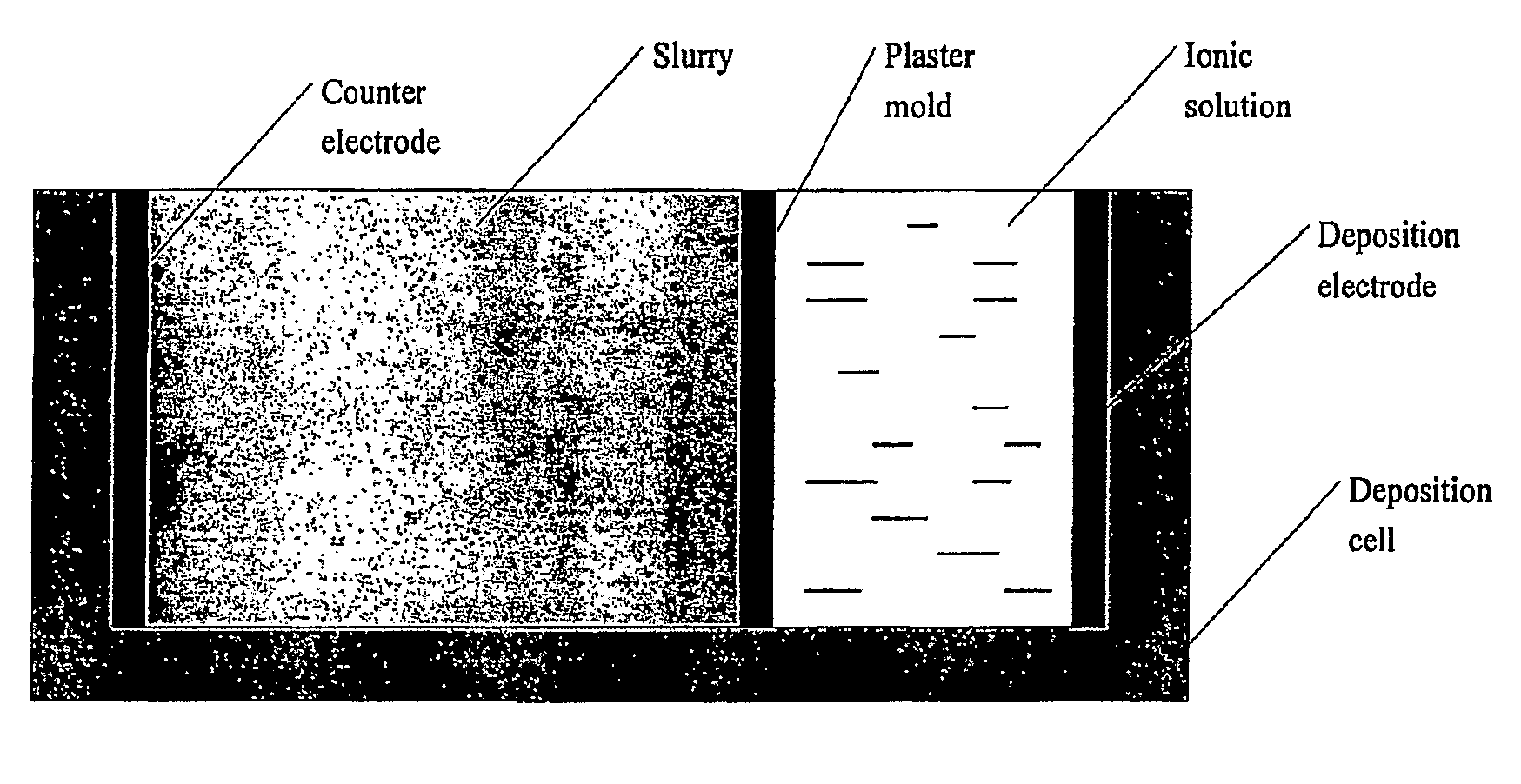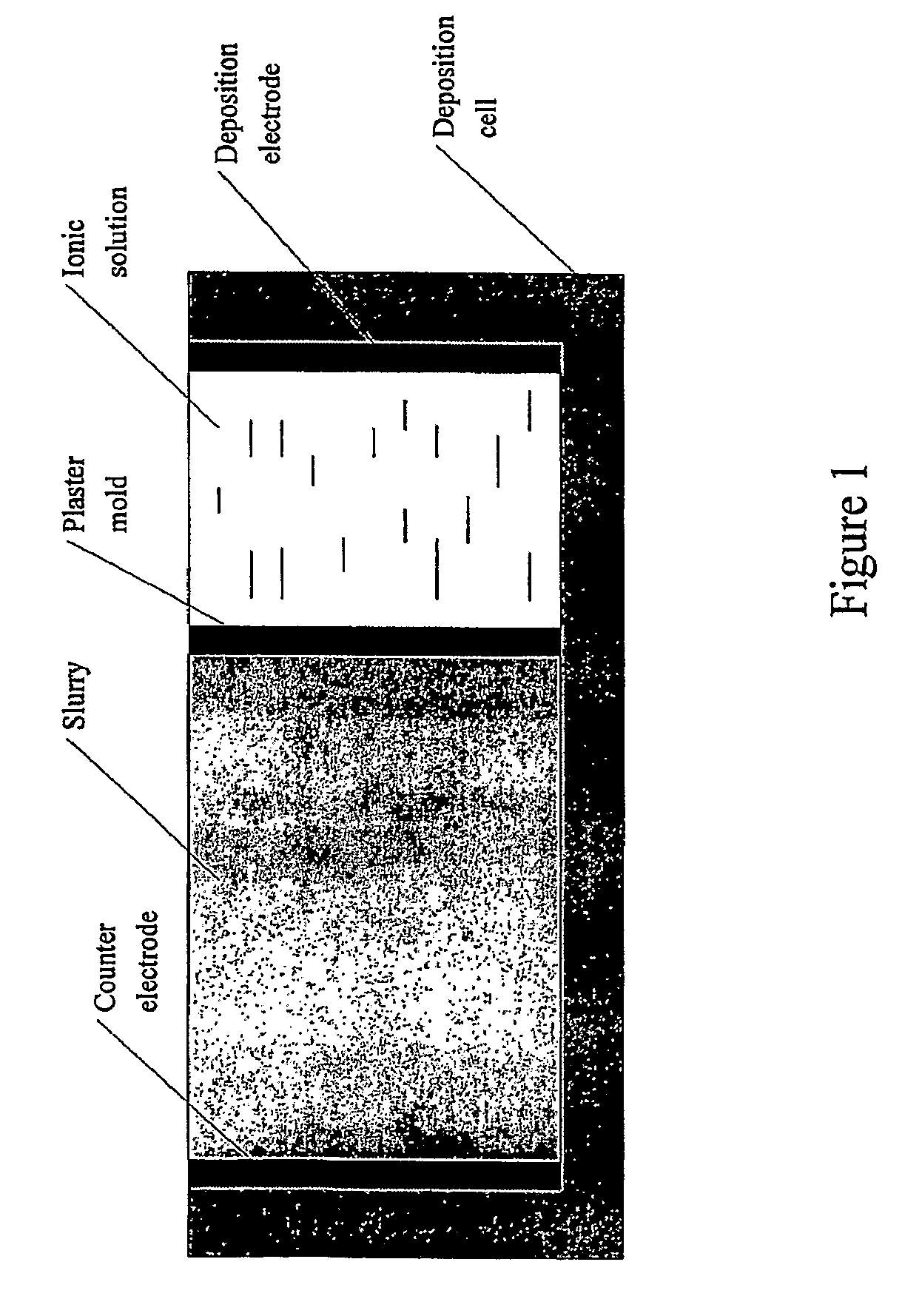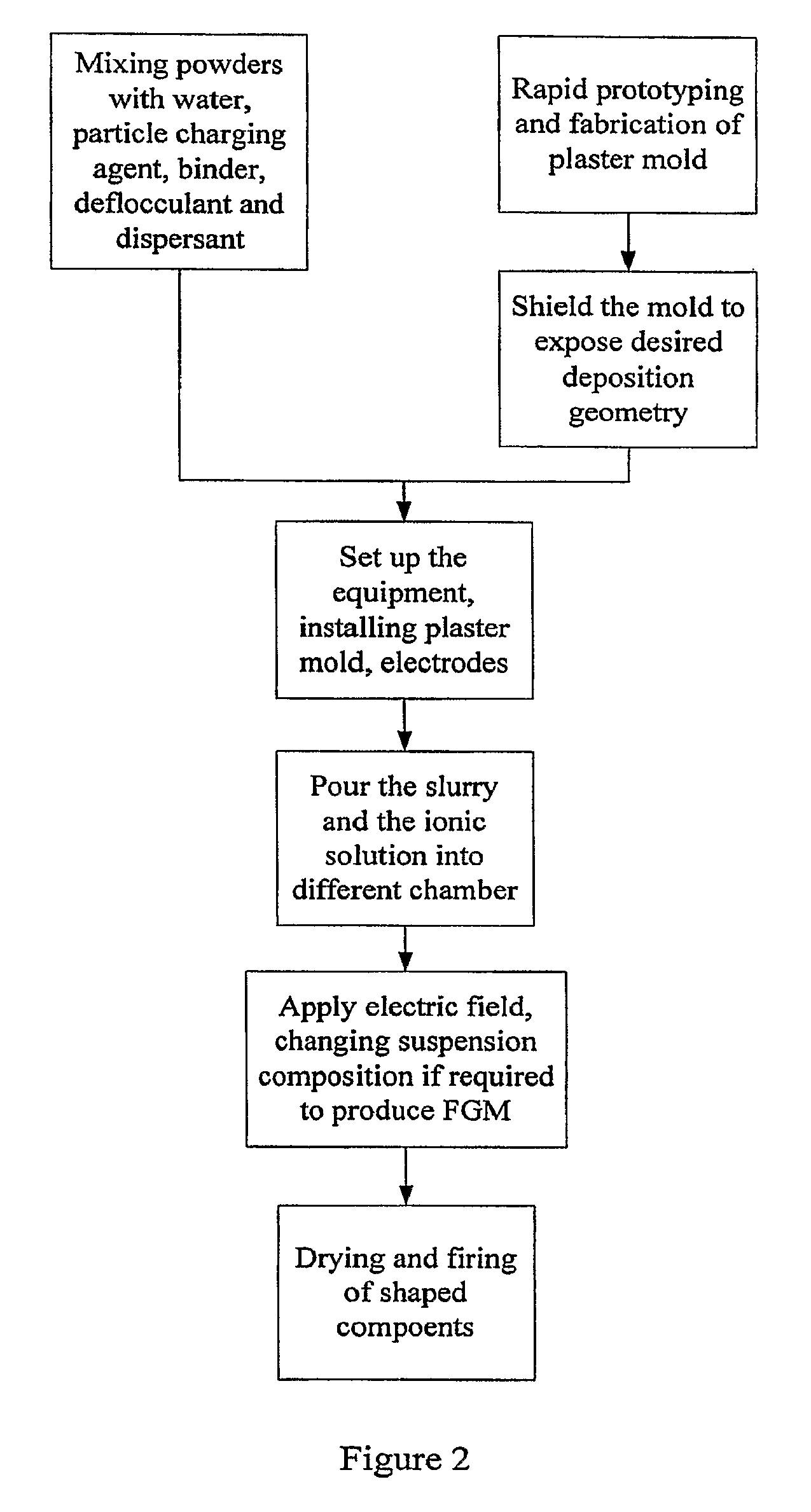Hybrid slip casting-electrophoretic deposition (EPD) process
a technology of electrophoretic deposition and hybrid slip casting, which is applied in the direction of liquid/fluent solid measurement, fluid pressure measurement, peptide, etc., can solve the problems of obstructing the integrity and reliability of structure/components, the process takes much longer than the invented hybrid process, and the quality of the deposits is undermined, etc., to achieve the effect of simple structure, easy shaping process and easy structure for material properties
- Summary
- Abstract
- Description
- Claims
- Application Information
AI Technical Summary
Benefits of technology
Problems solved by technology
Method used
Image
Examples
example 1
Development of Electrophoretic Deposition (EPD) Processes of the Invention
[0406]In one aspect, in order to fabricate FGMs by EPD followed by sintering, the initial shape has to be optimized prior to sintering. In this aspect, the formulations to simulate sintering of an FGM were developed based on the continuum theory of sintering. A finite element sintering-modeling subroutine was been created and linked to the commercial finite element package ABAQUS™ (Fremont, Calif.). The shape changes of FGM disks during sintering were simulated. In order to obtain the desired final shape after sintering, an inverse modeling methodology was developed to optimize the initial shape.
[0407]In one aspect, in order to fabricate the optimized initial shape of a green FGM specimen determined by the inverse continuum modeling of sintering, EPD of a number of FGM was investigated. The FGM green specimens made of Al2O3 and ZrO2 with the initial shape predicted by the inverse modeling, were deposited using...
example ii
Exemplary Processes of the Invention
[0409]A FGM disk made from Zeolite 3A (0.6 K2O: 0.40 Na2O: 1 Al2O3: 2.0±0.1SiO2:×H2O) and Zeolite 5A (0.80 CaO: 0.20 Na2O: 1 Al2O3: 2.0±0.1 SiO2:×H2O) powders were deposited. The powders were mixed with DI water in a planetary ball mill for 2 hours to make the suspension homogeneous. After that, the suspension was further dispersed in an ultrasonic cleaner. The particle loading in the slurry were 5˜50% vol. The particle size was 1 to 50 micron.
[0410]The DC voltage of 10˜100V was used in the EPD step. A magnetic stirrer was used to stir the suspension during EPD. The PH of the chamber containing DI water was adjusted to 10 by adding TMAH solution. The plaster mold defining the disk shape was fabricated by slip casting of plaster of Paris. Two stainless steel electrodes served as electrodes. Two suspensions of zeolite type 3A and 5A were prepared as described above. In order to obtain FGM, zeolite type 5A suspension was added into the initial zeolit...
example iii
Exemplary Processes of the Invention
[0411]A FGM disk with thickness of 5 mm was deposited. The powders used in this example are: Al2O3 (0.5 μm, A16-SG from Alcoa, USA), and ZrO2 (0.5 μm, TZ3YS from Tosoh, Japan). The pH of the DI water chamber was adjusted to 9.5-10 by adding TMAH. The slurry was mixture of Al2O3 and ZrO2. Both concentrations are 50-100 g / l. The slurry mixture was ball milled for 2 hours and further ultrasonicated for 20 minutes to make it homogeneous. Binders and dispersant are Duramax B-1000 and Duramax 3005, respectively. Both are from Rohm and Haas (Philadelphia, USA).
[0412]The plaster mold was fabricated by regular slip casting process. The cavity was designed to be the disk shape. Except the cavity, other areas of the mold were covered by glue.
[0413]After pouring the slurry and ionic solution (DI water plus TMAH) to the slurry chamber and ionic solution chamber respectively, a DC voltage from 25-200 V was applied. As the deposition continues, the ZrO2 slurry w...
PUM
| Property | Measurement | Unit |
|---|---|---|
| particle size | aaaaa | aaaaa |
| particle size | aaaaa | aaaaa |
| particle size | aaaaa | aaaaa |
Abstract
Description
Claims
Application Information
 Login to View More
Login to View More - R&D
- Intellectual Property
- Life Sciences
- Materials
- Tech Scout
- Unparalleled Data Quality
- Higher Quality Content
- 60% Fewer Hallucinations
Browse by: Latest US Patents, China's latest patents, Technical Efficacy Thesaurus, Application Domain, Technology Topic, Popular Technical Reports.
© 2025 PatSnap. All rights reserved.Legal|Privacy policy|Modern Slavery Act Transparency Statement|Sitemap|About US| Contact US: help@patsnap.com



